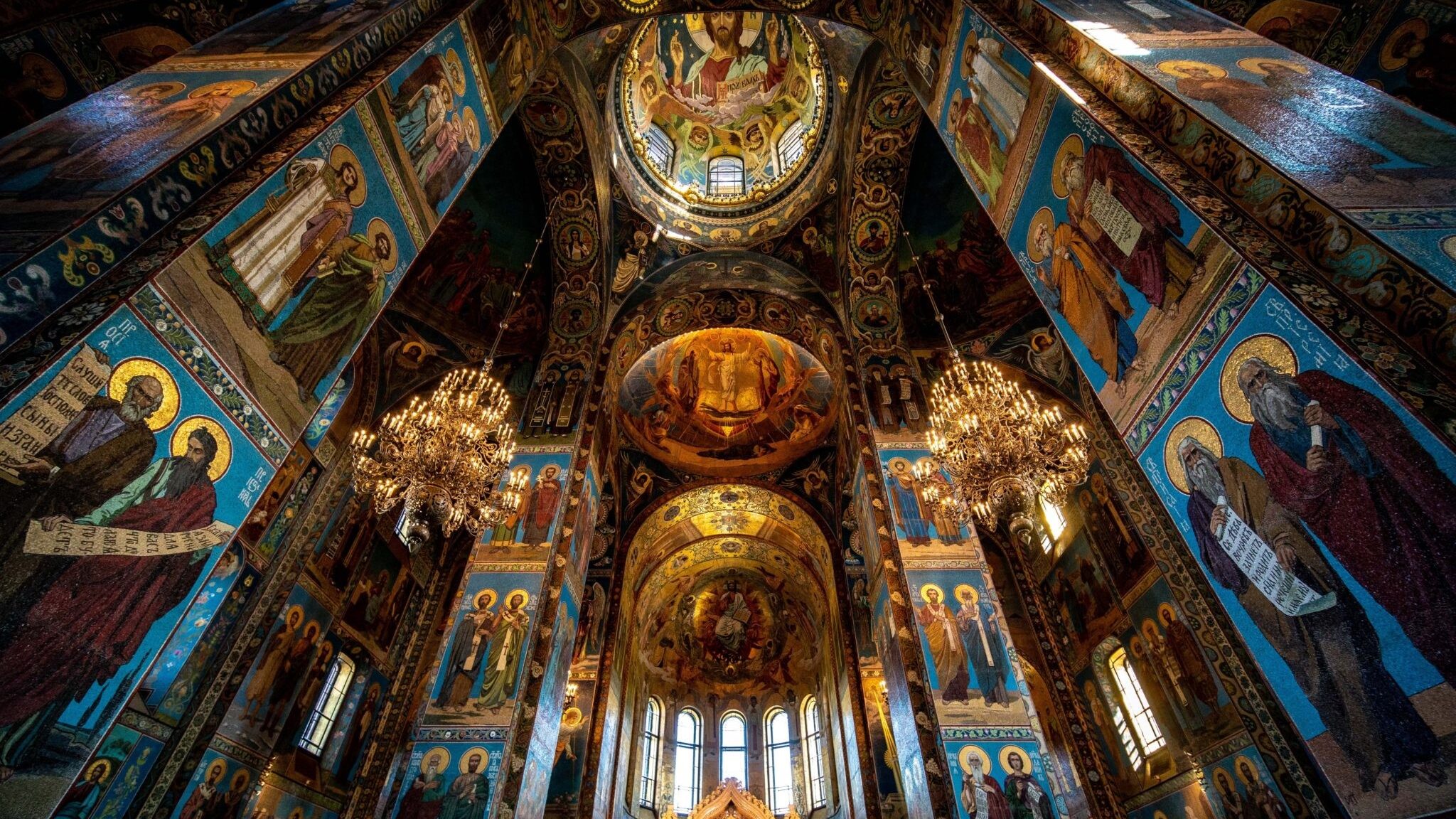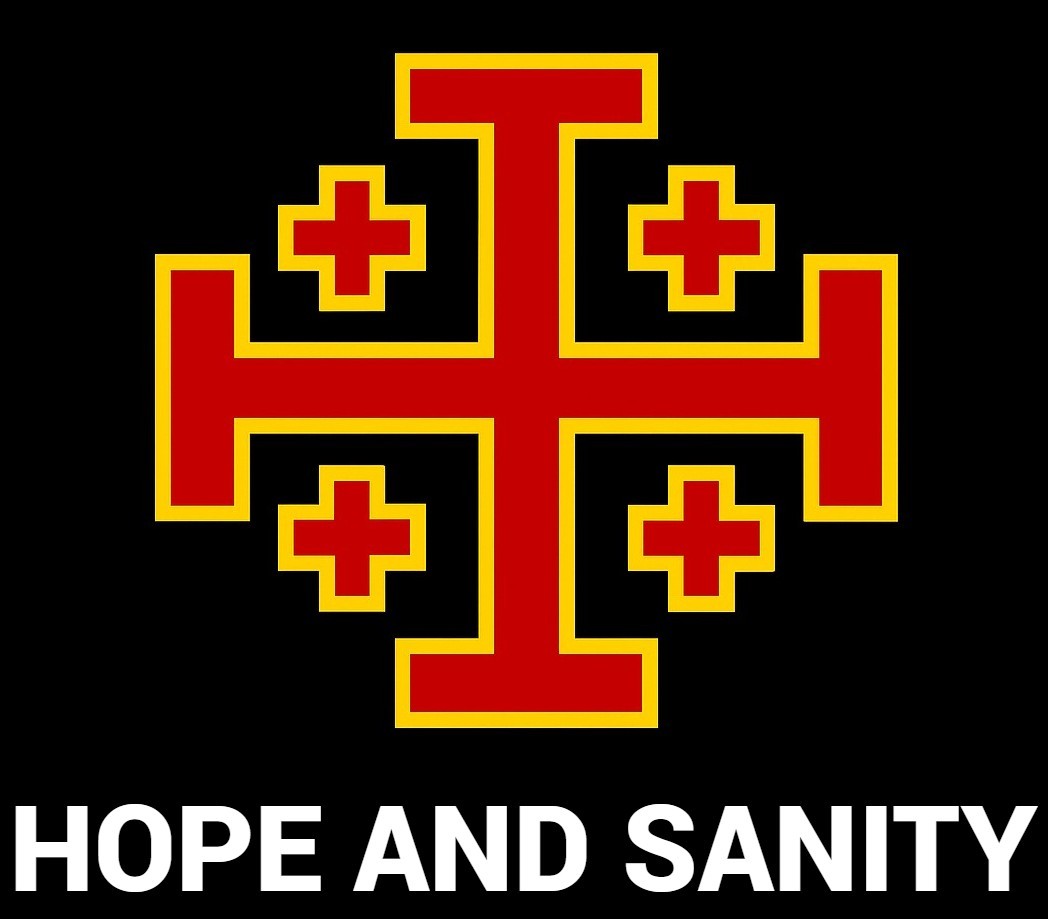
The Basics
Orthodox Christianity contends with Catholicism for the rightful claim to the original (and thus, true) Christian faith.. They believe that God created the universe and endowed man with a soul, but that man sinned and broke this original harmony. God enacted a plan to rescue man from this chaos. He revealed Himself to Moses and established laws and practices to keep the chosen people on the right path. When the time of fulfillment came, God sent down His Son (who is Himself God) to preach, to be crucified, to die, to resurrect, and then return to Heaven. He then sent the Holy Spirit, the third person of the Divine Trinity, to empower His followers to know and love God, and to convert the world.
Those who faithfully follow Christ will be “saved” through the redemptive power of His sacrifice. They will go to Heaven, God’s own dwelling place, to be with Him for eternity. Those who reject Christ will not receive a share in His redemptive power, left instead with the consequences of their own actions – disorder, evil, self-centeredness, and separation from God – Hell.
Orthodox Christians have Apostolic succession, ministerial priesthood, and sacraments, but reject the infallible doctrinal authority of the bishop of Rome (the Pope). Instead of relying on active ecumenism, their bishops rely on the time-tested teachings of a limited number of ecumenical councils. The Assyrian Church of the East, for example, only recognizes the first two councils of the Church, while a Catholic Sedevacantist recognizes 20 of the 21. Both accept a certain number of ecumenical teachings as binding and authoritative, and accept the authority of the bishops, but not Papal infallibility.
Note that the common understanding of Orthodoxy only includes the Eastern and Oriental Orthodox. The vast majority of Orthodox would hate to be compared to sedevacantists, and they are very different on a great many particulars. The reason I have grouped these together is the sufficient similarity principle (see here). Their critical commonality is rejecting ongoing Papal authority.
The History
The main doctrinal basis for the East-West schism is the “filioque” (“and the Son” in Latin). The original Nicene Creed stated that the Holy Spirit proceeds from the Father. The western church sought to respond to a popular seventh-century heresy about Christ not being coequal to the Father by clarifying that the Spirit proceeds from the Father and the Son. The theological basis for this is largely found in the farewell discourse of John 14-16, in which Christ “gives” the Spirit. The East refused this idea, citing the saints and earlier councils and claiming that the distinction would subordinate the Spirit.
By this point, the Pope had gained significant power relative to the Eastern authorities. The Pope was a Patriarch – a Bishop with authority outside his own jurisdiction (Nicaea, Can 6). Further, the Pope exercised a special appellate authority over the other Patriarchates, such as at Sardica. This privilege came with the chair of St. Peter and St. Paul. Meanwhile, the others (Antioch, Alexandria, Constantinople, Jerusalem) were mired with blatant heresies, wars with the Muslims, and violent theological disputes. The Roman bishop enjoyed orthodox teaching, safety from war, and obedience in the west. Knowing most of Christendom would accept his will, he unilaterally made the decision to add the filioque to the Creed.
The patriarch of Constantinople was not such a one. His position had grown in power as the leader of the “New Rome,” Byzantium. Despite the fact that Orthodox actually do accept that the Pope has a special role as the successor to Peter, the patriarch rejected this Papal ruling as an overstepping of said role. Other disputes increased the animosity, such as the Eastern fury over the Pope crowning Charlemagne as Emperor. Over the centuries, the divide grew deeper and wider until the two representatives’ (Rome, Constantinople) mutual excommunications in 1054. Though many use this as the date of the Great Schism, it did not seal the schism in reality. Most of the faithful weren’t even aware this feud was going on.
The next major East-West alienation was the sack of Constantinople by the Roman crusaders 150 years later. The Orthodox had managed to live under the Muslims in relative peace for a long while. The Crusaders, on their way to take back Jerusalem from the Muslims, struck a deal with Alexius, a Byzantine prince. He offered the crusaders fealty to the Pope and support in their quest for Jerusalem if they helped him take the throne. They did, but he was deposed and failed to make good on his promises. Enraged, the crusaders ignored the pleas of the Pope and (after being excommunicated) stormed the city, violated its holy places and women, and stole enormous amounts of wealth. But even then, this was not “clearly” the end of East-West communion.
The most objectively clear point of schism is the Council of Florence. The Church convened this council in the 1430’s expressly to heal the growing schism. The Council ended with several concessions on both sides, but more for the East, who needed to end the council on good terms to secure much-needed military aid against the Ottoman Turks. The West, for their part, established Constantinople as the “second” Metropolitan after Rome, reversing the Papal rejection 1,000 years prior (Florence, Chalcedon). Most notably, the East agreed that willful schism with the Church renders one unfit for eternal life – “even if one should shed his blood in the name of Christ” (Florence). After agreeing to this, the Orthodox prelates universally recanted. But, clearly, there was no going back – one Church accepted Florence, the other did not. The Catholic and Orthodox Churches were now truly separate.
Despite communion lingering here and there for another 300 years, the schism is deep and plain today. Despite efforts to reunify, the idea is nigh impossible. Doctrine is doctrine; there can’t be any meeting halfway. Councils are either legitimate, or not legitimate. Communion would require one side to submit to or oust 14 councils’ worth of Catholic doctrine. This would completely abase whichever side submitted to the other. The only foreseeable way that could even happen is by strong representation, and no Orthodox communion has an office fitting for that. The closest is the Patriarch of Constantinople, but if he decided to submit to Catholicism, many would simply reject it.
Orthodox Ideas
There are three major groups within Orthodoxy, and one subgroup.
The Eastern Orthodox are the largest group, mostly concentrated in Russia, Eastern Europe, and Greece. They have a history mired in turmoil and tragedy under Mongol, Muslim, and Soviet rulership. Eastern Orthodoxy is a confederation of autocephalous dioceses, each ruled by a Bishop and united under the binding doctrines of the first seven ecumenical councils. The first seven councils’ primary definitions are that Jesus and the Holy Spirit share the essence of God, that Jesus is true God and true man and has two natures as such, and that the use of icons is good practice.
Beyond the Nicene Creed and the first seven ecumenical councils, little else is absolutely certain under Eastern Orthodoxy. Their autocephalous structure means that almost any question not solved at one of the early ecumenical councils or derived from the earliest and most utterly unquestionable ecumenical traditions (i.e., real presence, apostolic succession) are up for some debate. But, that’s by design, not by accident – the Orthodox take pride in their practice bearing greater similarity to the “original” Church than the Latins. For example, the liturgy is far more traditional than modern Catholic Mass. It is entirely chanted, is said facing East, and is a sacramental reenactment of the entire life of Christ. Their fasts are more regular and demanding than in the Latin Church. Despite the autocephaly, there are a few post-schism, concrete doctrinal distinctions from the Latin Church, however:
The Orthodox repudiate Papal infallibility and the idea that the Nicene Creed can be changed, never mind unilaterally. They believe that God’s unknowable essence (who He is) is distinct from his uncreated energies (how He interacts with things), which has significant implications regarding the nature and dispensation of grace. The religion is much more “experiential” than the Latin Church, involving Eastern styles of meditation and a belief that one can – in a limited fashion – experience Heaven before death. They do not profess the Immaculate Conception of Mary as sinless in the womb. They reject Purgatory as a defined dogma, but have a similar concept of a place of purification. Some of the most serious disagreements with the west are the permission of divorce and contraception. The Catholic Church rejects both as morally impermissible. The Eastern churches accept divorce under certain circumstances and permit the use of non-abortive contraception.
The Oriental Orthodox are separate from the Eastern Orthodox, and are mostly concentrated in Egypt, Ethiopia, Syria, and Armenia. They are practically the same as the Eastern Orthodox, except that they only accept the first three ecumenical councils. They believe – heretically, according to Catholics and Eastern Orthodox – that the Council of Chalcedon introduced division into Christ. Over the years, many have come to think the Oriental Orthodox separated because of issues with translation, not true doctrinal disagreement. Nonetheless, they have not rejoined communion with the Catholics nor the Eastern Orthodox. The Oriental Orthodox churches are all in communion with each other as a confederation of autocephalous dioceses.
The Assyrian Church of the East is found in Iraq. They only accept the first two ecumenical councils as binding. They admit that Christ has two natures, but insist that they are distinct natures, such that one may say that “God did not die on the cross.” Whether this is more of a translation issue (like the Oriental Orthodox) is more contentious. This is a heretical position to the Catholics, Eastern Orthodox, and Oriental Orthodox. In most other ways, they are similar to the other Orthodox churches, except they tend not to use icons. This is not due to a doctrinal concern per se, but a distaste brought about by living in Muslim-dominated culture.
Finally, there are the “Sedevacantists.” Sedevacantists are, in essence, Catholic. They believe in the authority of the Pope and of councils ratified by the Pope with universal intent. However, they also believe that there has not been a true Pope since some time prior to the 1960’s. Unlike true “Orthodox,” they accept 19 or 20 councils (as opposed to seven or fewer), and await a true Pope. Yet, they still reject the Papacy in practice and rely on preestablished doctrines, so I have categorized them as Orthodoxy.
Conclusion
Orthodox Christianity is a non-Papal community of Christians which still maintains hierarchy, the ministerial priesthood, and ecumenical doctrine. There are three major communions within Orthodoxy, each separated by disagreements about the nature of God.
My critique of Orthodox Christianity will focus on logical contradictions regarding doctrine.
You can follow the hyperlink here or navigate to it via the menu.
